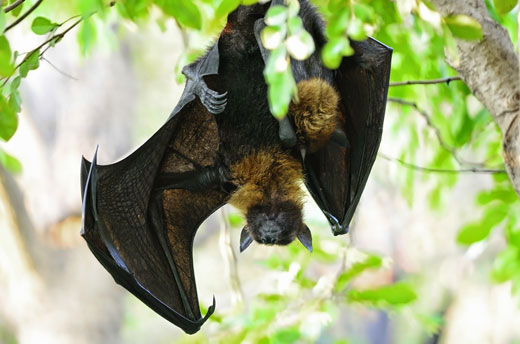While virologists study pathogens like Ebola by zooming in on them with an electron microscope, primate disease ecologist Thomas Gillespie climbs 100-foot trees in the tropical forests of Africa to get the big picture view. He tracks pathogens in the wild to learn how they adapt to changing environments and jump between species.
It is physically challenging work that often takes him into remote forests where the wildlife has not yet learned to fear people. A chimpanzee turned Gillespie into a human yo-yo while he was ascending a tree with a rope and harness. “Chimpanzees have 10 times the strength of a man and they can be curious and playful,” he says. “I once had an adult male chimpanzee grab my rope and bounce me up and down.”
Wild primates pose a special risk for zoonotic diseases—those transmissible from animals to humans—due to our close genetic relationship. HIV/AIDS and Ebola are the two most dramatic examples of diseases linked to wild primates, but many other viral, bacterial, fungal, and parasitic pathogens found in apes and monkeys are readily passed to humans.

